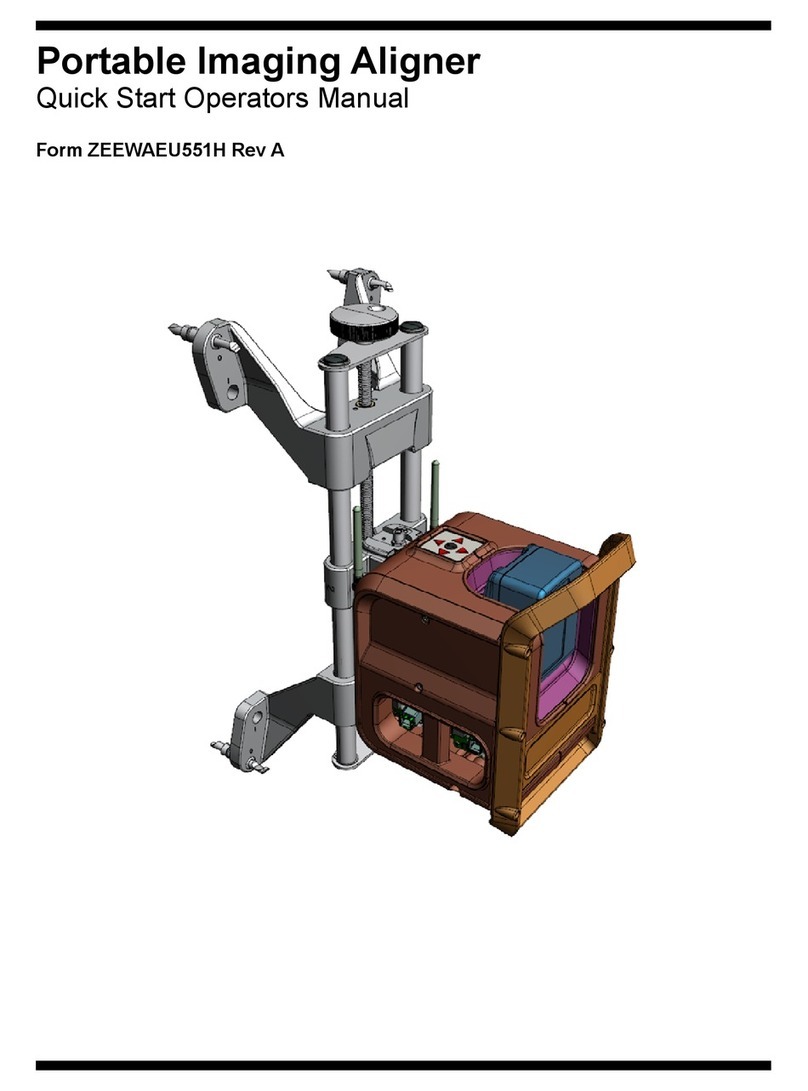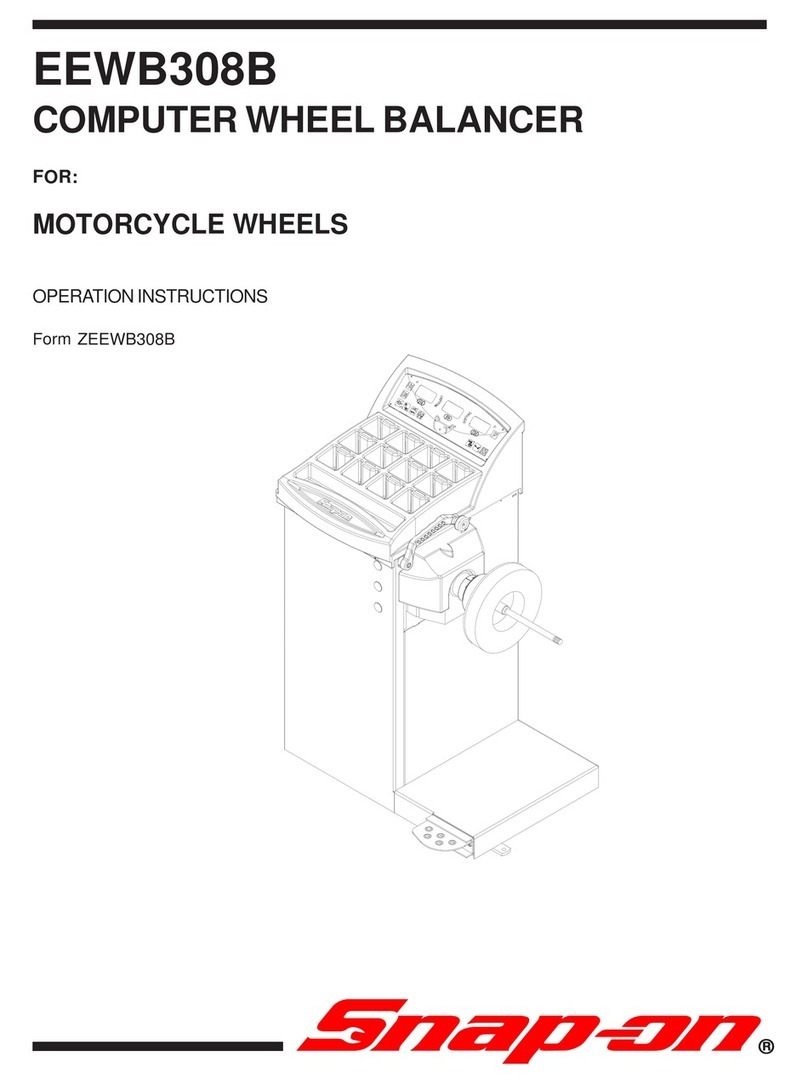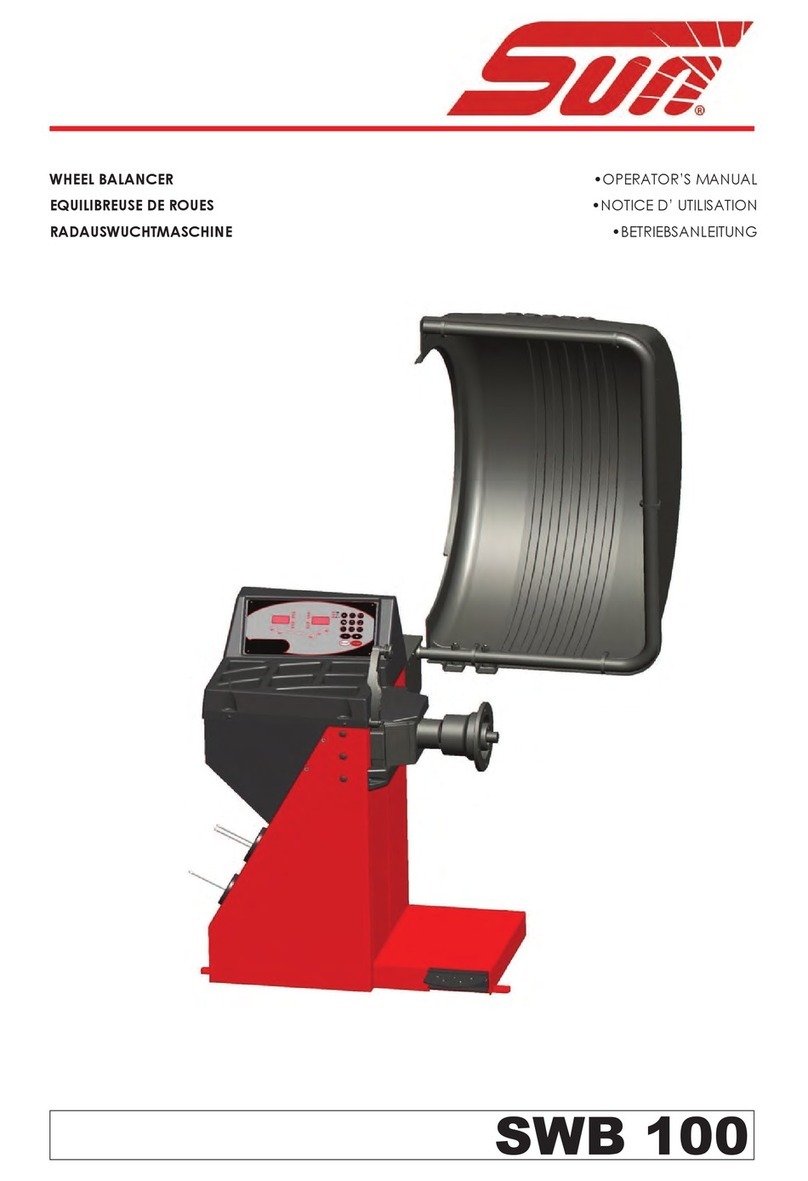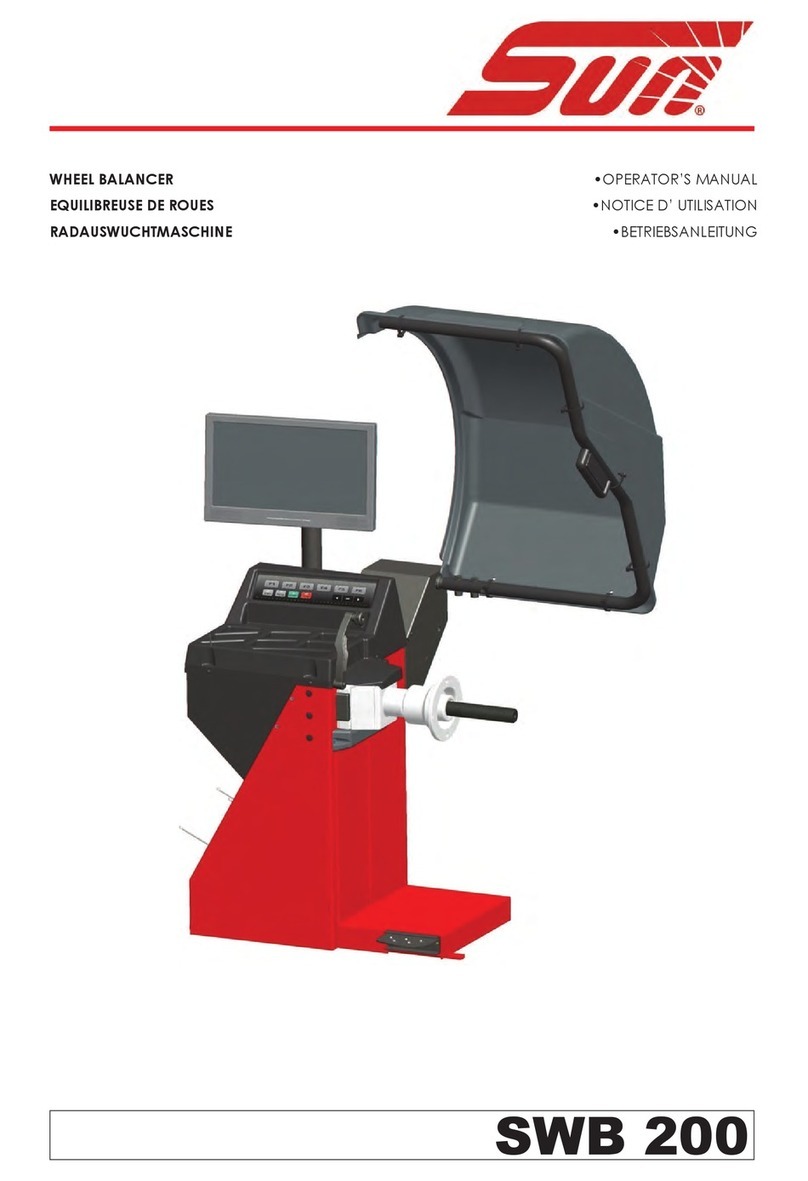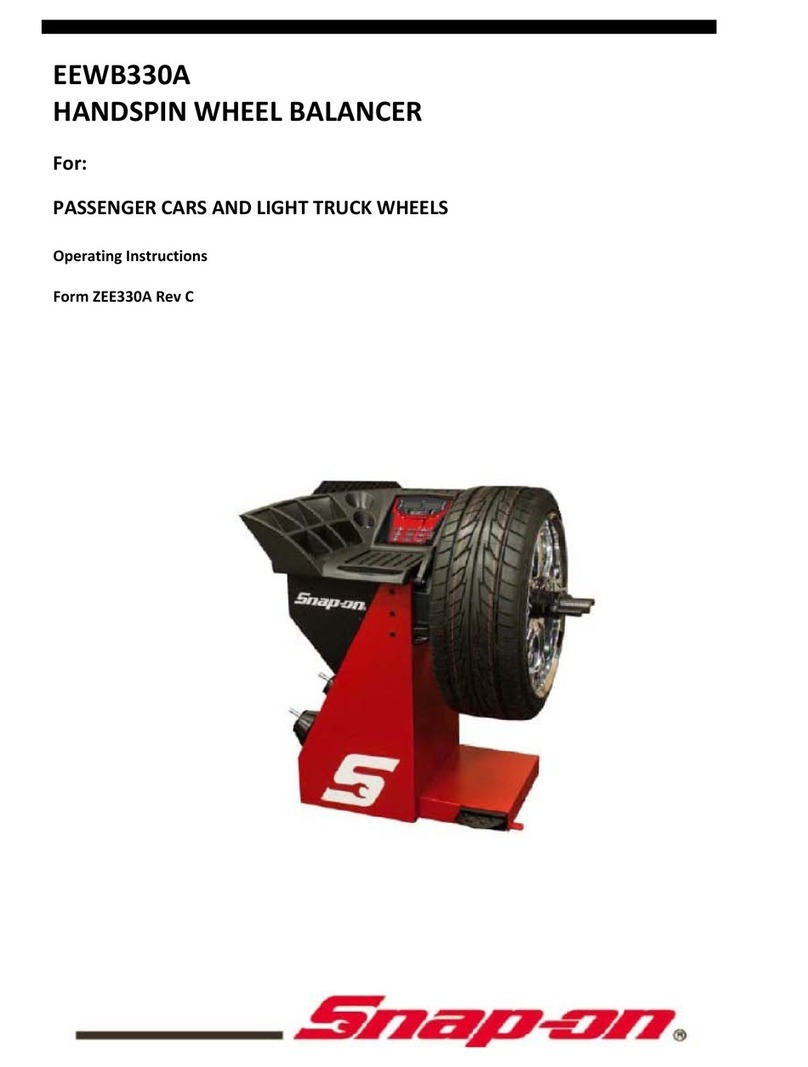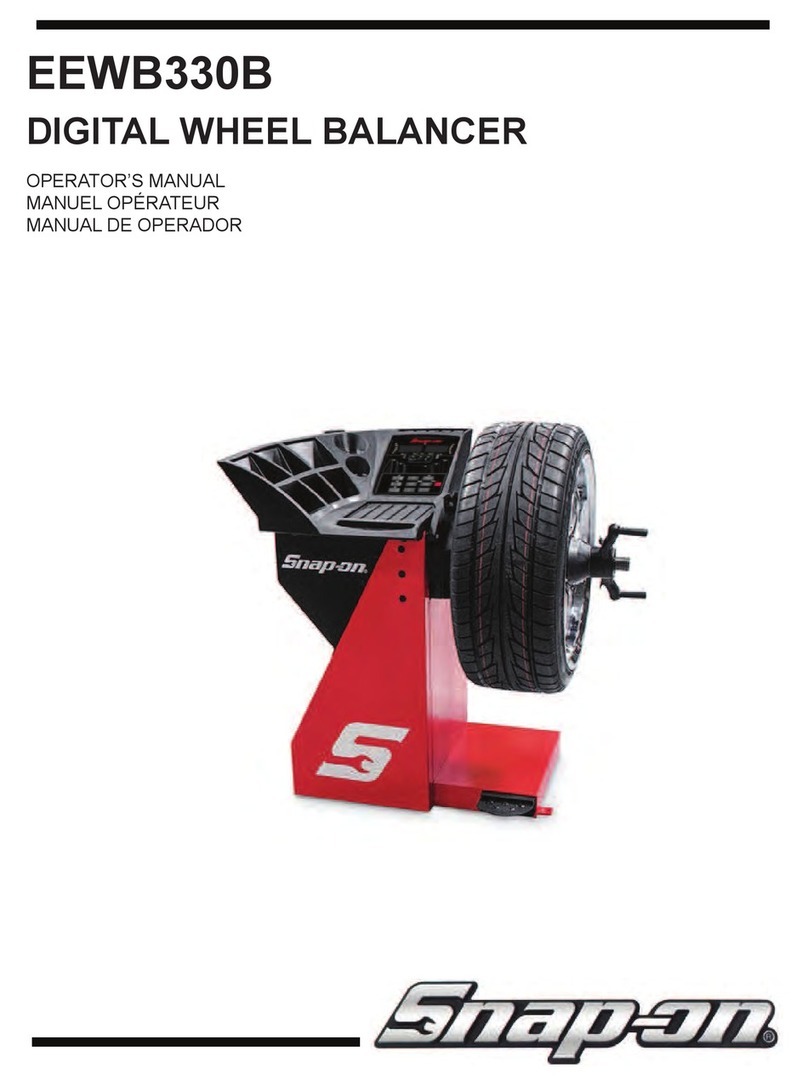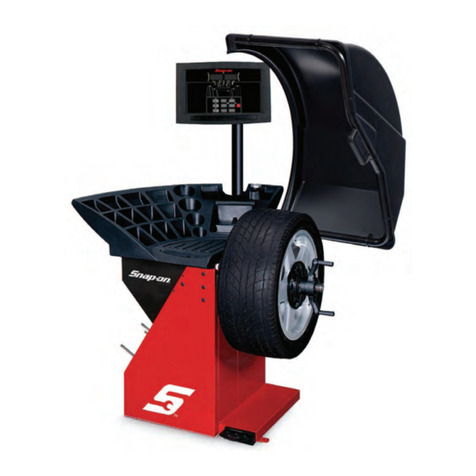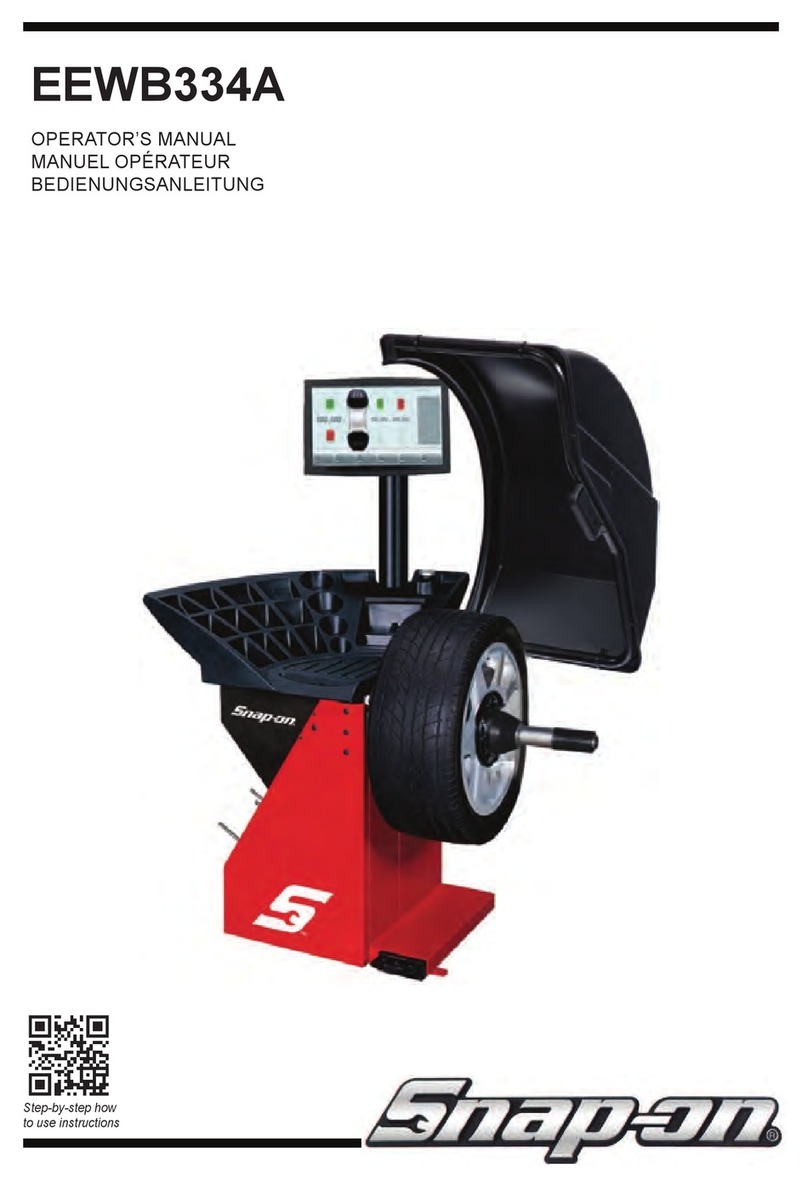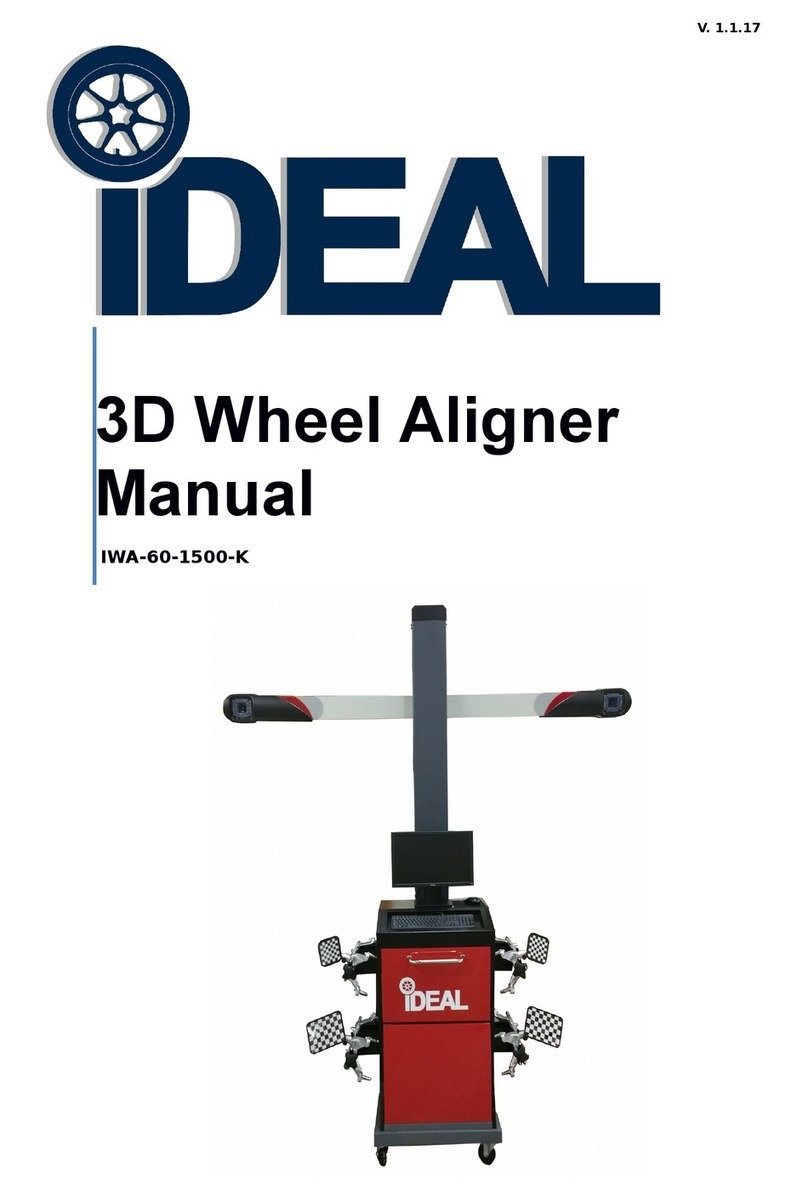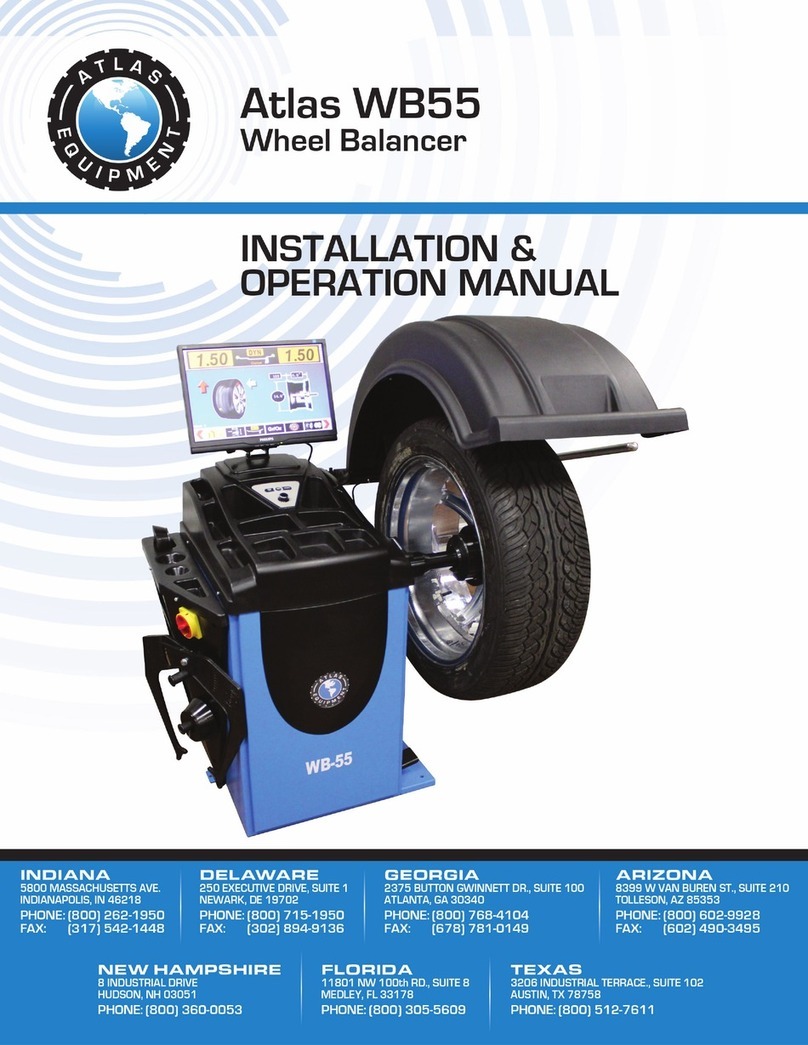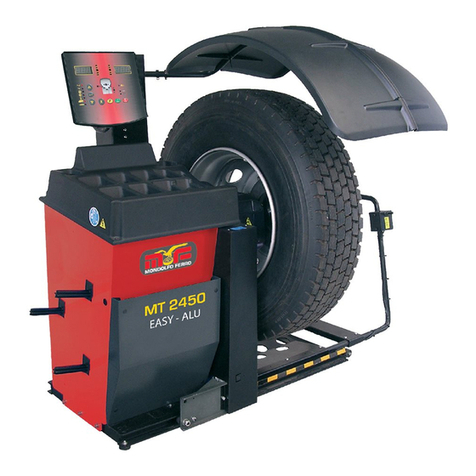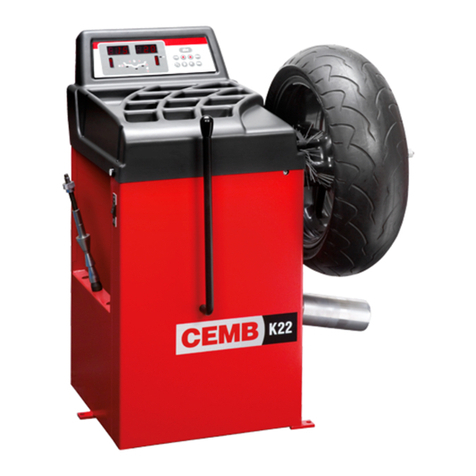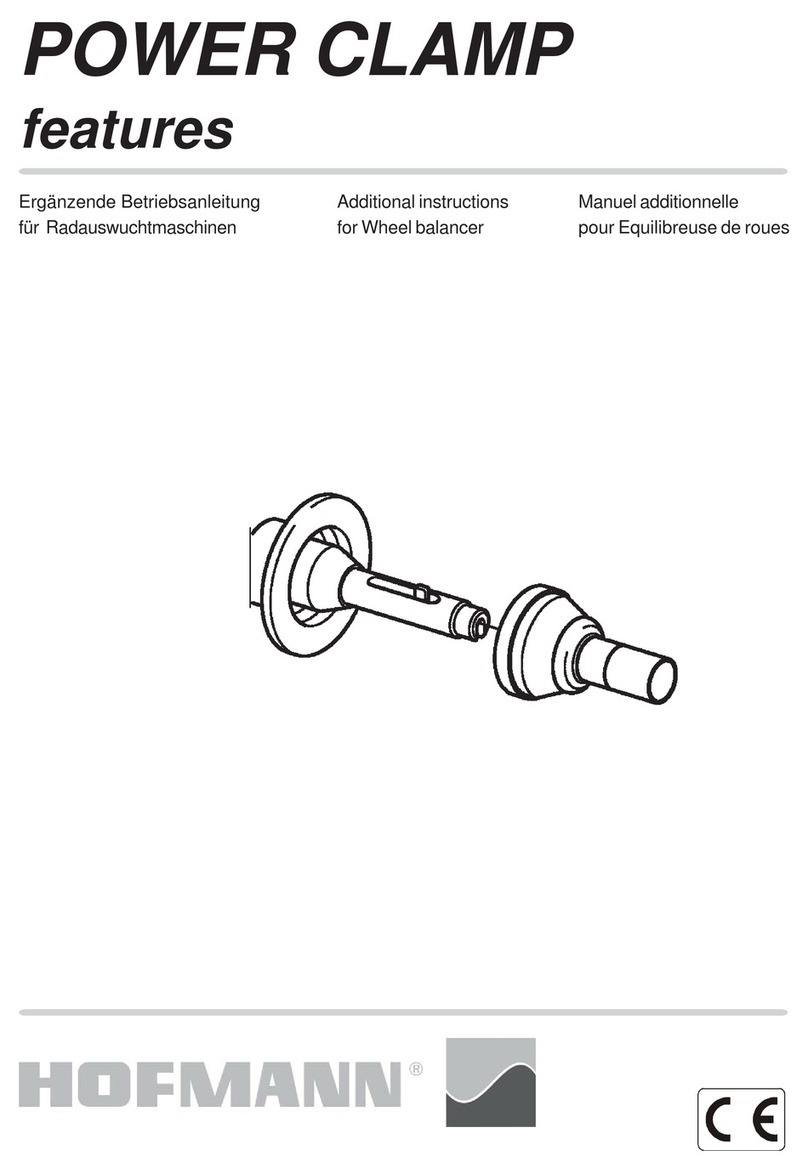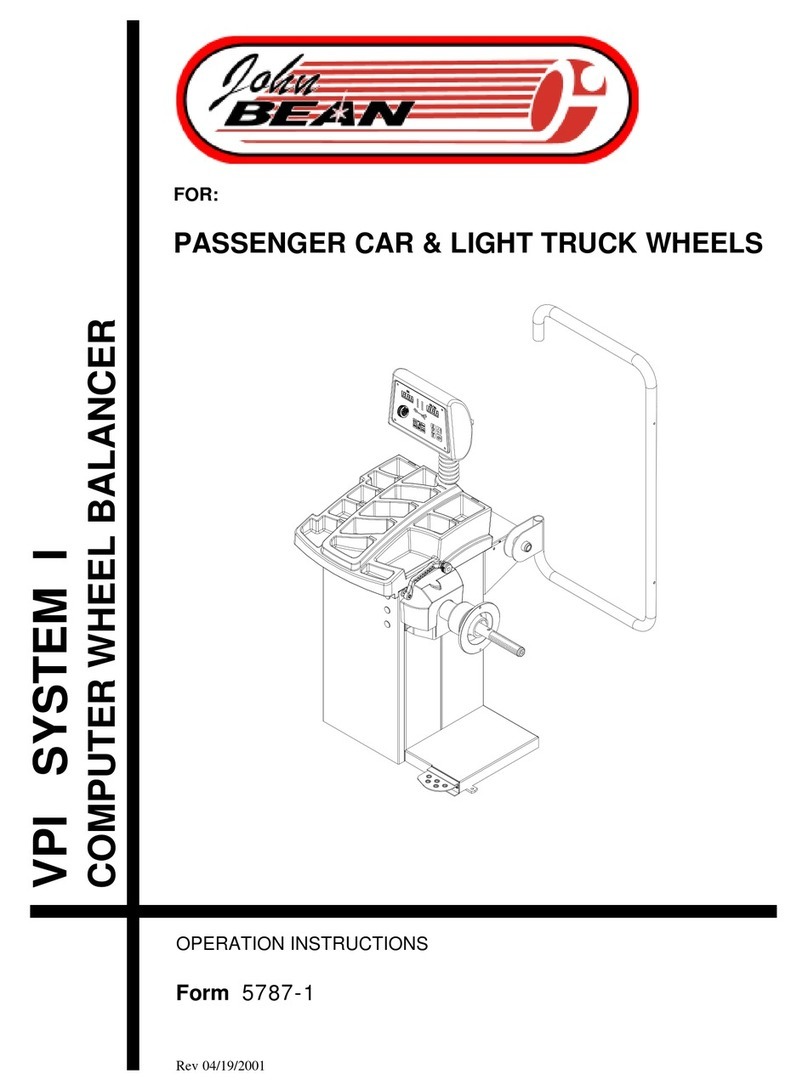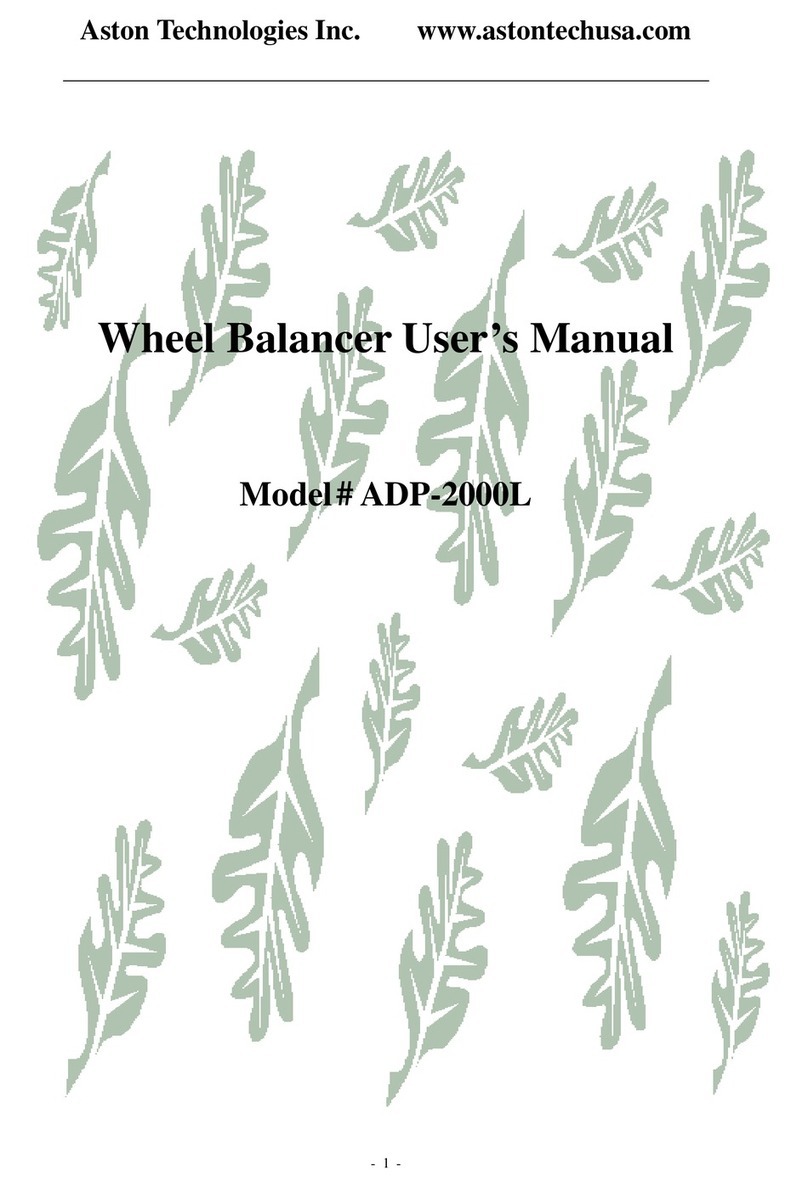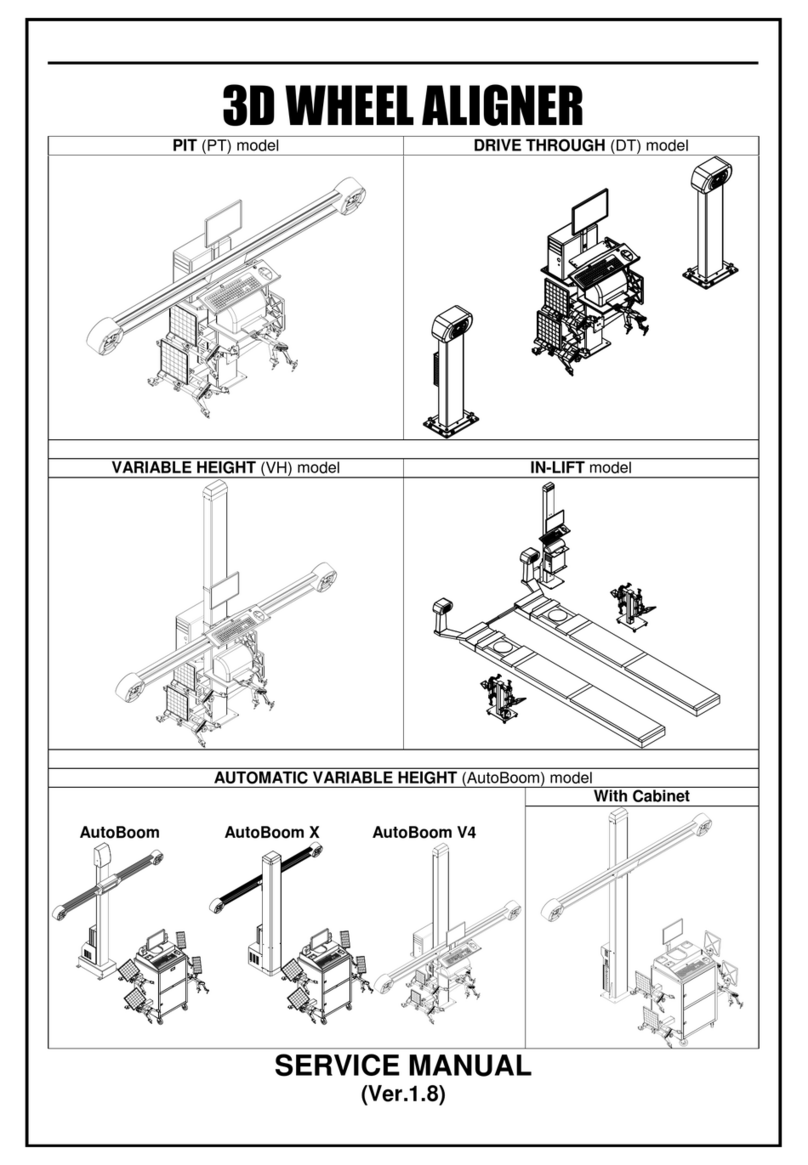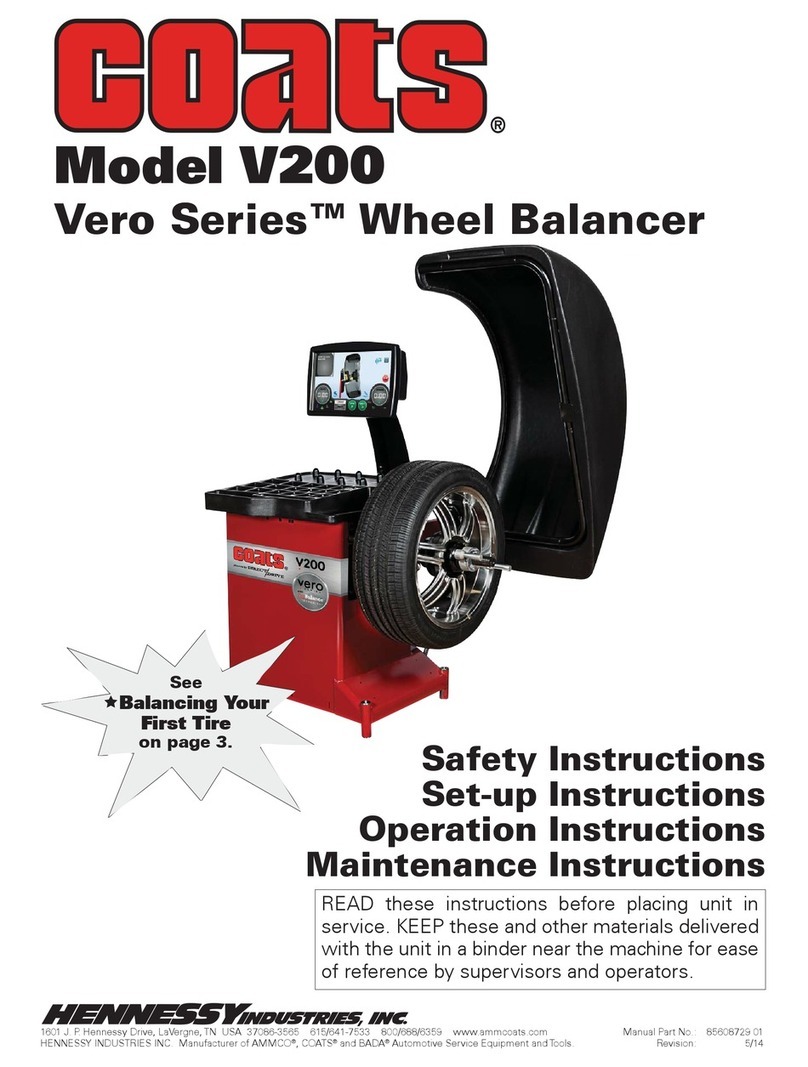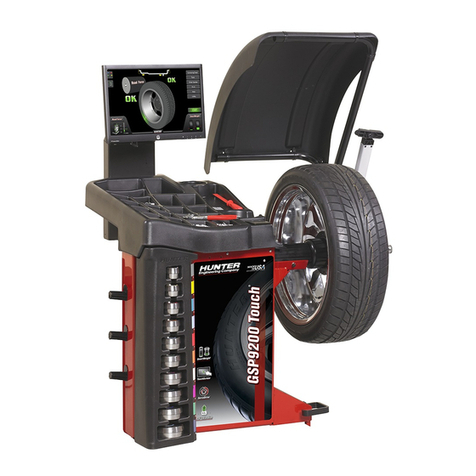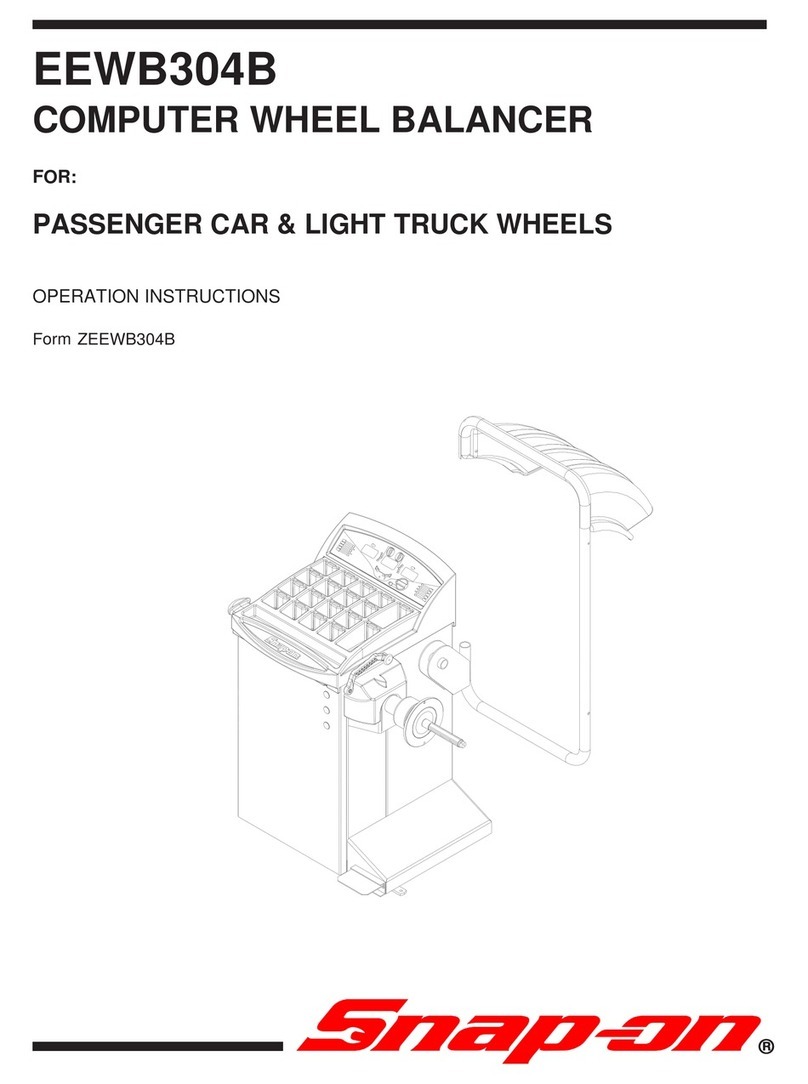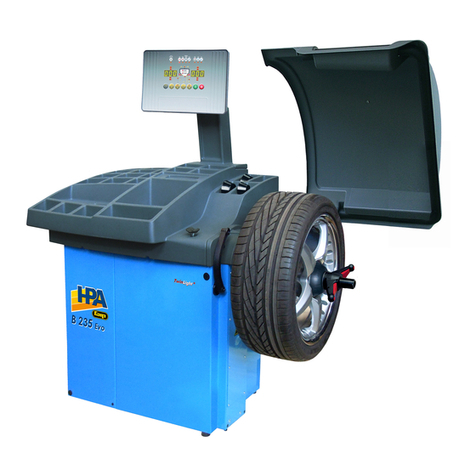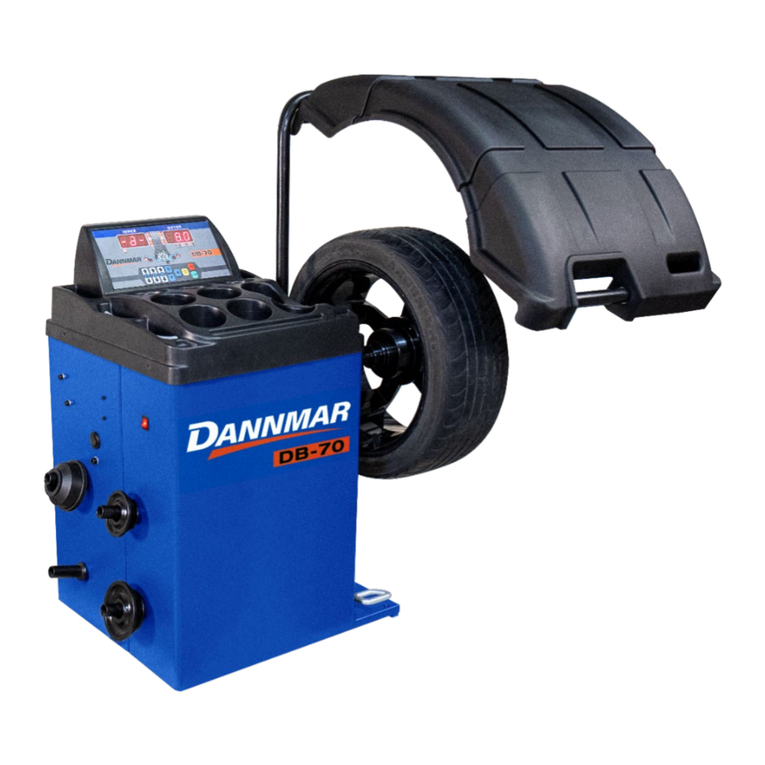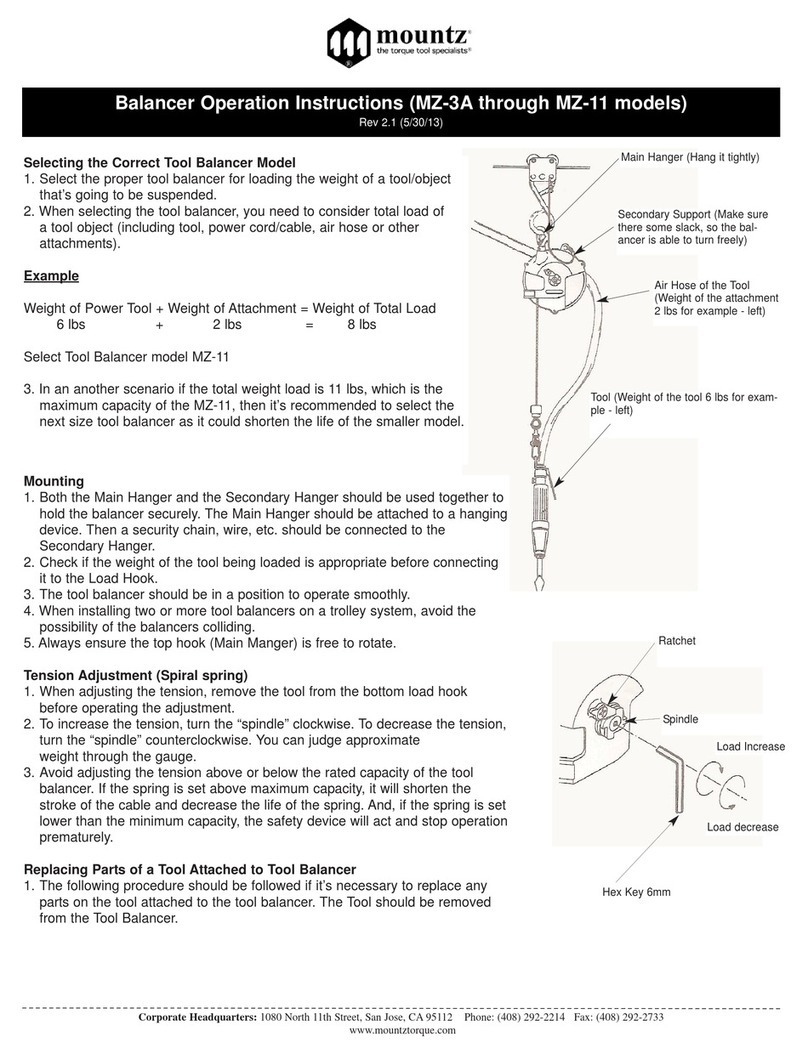
4EEWB331B
TABLE OF CONTENTS
IMPORTANT SAFETY INSTRUCTIONS.......................................................................................3
1.0 INTRODUCTION...........................................................................................................................5
1.1 SAFETY NOTICE..........................................................................................................................5
1.2 BALANCER APPLICATION ..........................................................................................................5
1.3 EEWB331B SPECIFICATIONS ...................................................................................................6
1.4 FEATURES ................................................................................................................................... 6
1.5 STANDARD ACCESSORIES........................................................................................................7
1.6 OPTIONAL ACCESSORIES .........................................................................................................7
1.7 DIMENSIONS OF THE MACHINE................................................................................................8
1.8 REQUIRED INSTALLATION AREA...............................................................................................8
1.9 INSTALLATION INSTRUCTIONS .................................................................................................8
2.0 BALANCER INSTALLATION......................................................................................................... 9
2.1 HOOD GUARD INSTALLATION ...................................................................................................9
2.2 ELECTRIC INSTALLATION ..........................................................................................................9
3.0 TERMINOLOGY..........................................................................................................................10
3.1 THE INPUT PANEL..................................................................................................................... 10
4.0 OPERATION OF THE BALANCER.............................................................................................12
4.1 CHECK LIST - INSPECTION...................................................................................................... 12
4.2 WHEEL MOUNTING...................................................................................................................13
4.2.1 STANDARD WHEELS (BACK CONE MOUNT).........................................................................13
4.2.2 CENTERING LIGHT-TRUCK WHEELS .....................................................................................13
4.2.3 WHEEL MOUNTING REQUIRING SPECIAL TOOLING ............................................................14
4.3 MODE SELECTION....................................................................................................................14
4.3.1 WEIGHT PLACEMENT MODES.................................................................................................14
4.3.2 SAPE ARM POSITIONS FOR ALU WEIGHTS PLACEMENT....................................................15
4.4 SELECTING OPERATOR PREFERENCES...............................................................................16
4.4.1 FINE BALANCING MODE .......................................................................................................... 16
4.4.2 OUNCE/GRAMS CONVERSION................................................................................................ 16
4.4.3 RIM DIAMETER IN MILLIMETERS ............................................................................................ 16
4.5 ENTER RIM PARAMETERS ......................................................................................................16
4.5.1 RIM DISTANCE AND DIAMETER (OFFSET) ............................................................................16
4.5.2 MEASURE/ENTER RIM WIDTH (MANUAL) ............................................................................. 16
4.5.3 MANUAL PARAMETER ENTRY .................................................................................................17
4.5.3.1 MANUAL RIM DIAMETER ENTRY............................................................................................. 17
4.5.3.2 MANUAL DISTANCE ENTRY .....................................................................................................17
4.6 Easy Alu FUNCTION...................................................................................................................17
4.6.1 AUTOMATIC RIM DIMENSION READING/SETTING AND ALU MODE ....................................17
4.7 CORRECTION OF THE IMBALANCE ........................................................................................18
5.0 ALU 2P AND 3P BY GAUGE ARM..............................................................................................20
6.0 SPOKE BALANCING MODE ......................................................................................................21
6.1 SPLIT WEIGHT MODE (SWM) ...................................................................................................21
7.0 USER CALIBRATION .................................................................................................................22
8.0 USER FUNCTIONS ....................................................................................................................23
8.1 DATA RECALL ............................................................................................................................23
8.2 WEIGHT UNIT TOGGLE MODE.................................................................................................23
8.3 DIMENSION UNIT TOGGLE MODE........................................................................................... 24
8.4 ANTI-SLIP FUNCTION................................................................................................................24
9.0 OPTIMIZATION/WEIGHT MINIMIZATION. ................................................................................. 25
10.0 TROUBLE SHOOTING ............................................................................................................... 33
10.1 SYSTEM MESSAGES ................................................................................................................34
10.1.1 C CODES.................................................................................................................................... 34
10.1.2 E-CODES.................................................................................................................................... 36
10.1.3 H CODES - WARNING ...............................................................................................................38
11.0 MAINTENANCE .......................................................................................................................... 38
